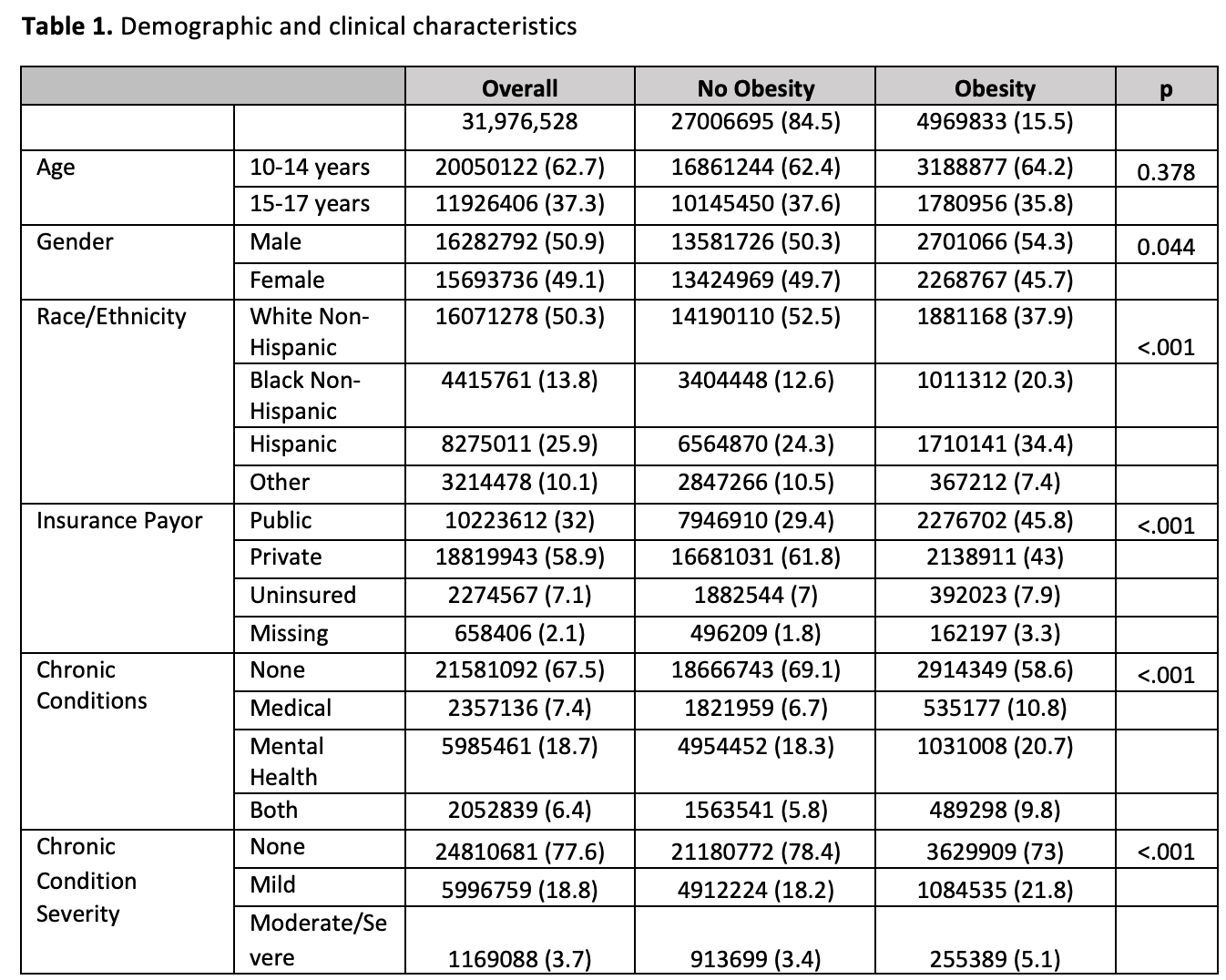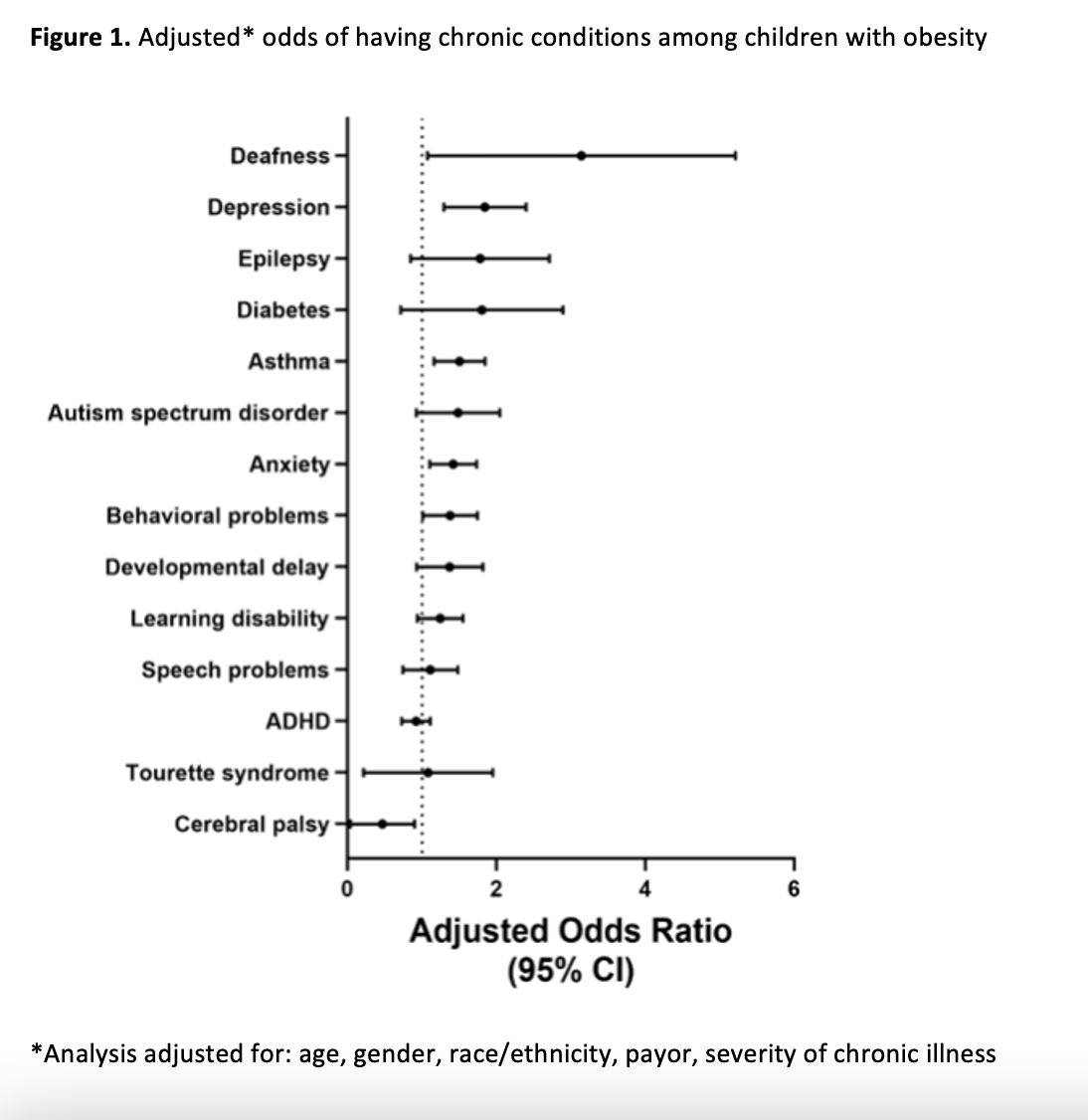Obesity
Category: Abstract Submission
Obesity I
512 - Prevalence and Severity of Chronic Conditions among Children with Obesity
Saturday, April 23, 2022
3:30 PM - 6:00 PM US MT
Poster Number: 512
Publication Number: 512.238
Publication Number: 512.238
Kathryn Kyler, Children's Mercy Hospitals and Clinics, Kansas City, MO, United States; Matthew Hall, Children's Hospital Association, Lenexa, Kansas, KS, United States; Amy Houtrow, University of Pittsburgh School of Medicine, Pittsburgh, PA, United States

Kathryn E. Kyler, MD, MS
Assistant Professor of Pediatrics
Children's Mercy Hospitals and Clinics
Kansas City, Missouri, United States
Presenting Author(s)
Background: Obesity in childhood is a risk factor for obesity in adulthood and poor health outcomes across the lifespan. Providing an updated understanding of the prevalence and relationships between obesity and severity of chronic conditions can identify at-risk populations requiring more research and attention in clinical care.
Objective: To compare the prevalence and severity of chronic conditions among children with and without obesity.
Design/Methods: This retrospective cohort study included children aged 10-17 years in the 2018-2019 National Survey of Children’s Health (NSCH). Children were categorized using Centers for Disease Control and Prevention definitions as having or not having obesity based on parental reported height/weight. Fourteen chronic conditions were identified, and parental reported severity was categorized as mild or moderate/severe. Logistic regression was used to compare the adjusted prevalence of chronic conditions between children with and without obesity. Comparisons were also made between children with and without obesity who had moderate/severe chronic conditions.
Results: A total of 30,428 were included in the sample representing 31,976,528 children in the US, 15.5% of whom had obesity. Significant differences existed between children with and without obesity based on sex, race/ethnicity, insurance payor, type and severity of chronic condition (Table 1). The adjusted odds of having chronic conditions among children with obesity were significantly higher compared to children without obesity for 5 of 14 conditions: asthma, deafness, anxiety, depression, and behavioral problems. The odds of cerebral palsy among children with obesity was decreased (aOR 0.34, 95% CI 0.12-0.95). The adjusted risk of having moderate/severe chronic conditions among children with obesity was increased for fewer conditions: depression, autism spectrum disorder, and developmental delay (Table 2).Conclusion(s): Children with obesity are at increased risk of having chronic health conditions, sometimes associated with more severe disease. This association was especially true for children with obesity and mental health or developmental problems. Future research and funding directed at prevention and treatment of obesity should focus on populations with these chronic conditions.
Table 1. Demographic and clinical characteristics
Figure 1. Adjusted* odds of having chronic conditions among children with obesity
Objective: To compare the prevalence and severity of chronic conditions among children with and without obesity.
Design/Methods: This retrospective cohort study included children aged 10-17 years in the 2018-2019 National Survey of Children’s Health (NSCH). Children were categorized using Centers for Disease Control and Prevention definitions as having or not having obesity based on parental reported height/weight. Fourteen chronic conditions were identified, and parental reported severity was categorized as mild or moderate/severe. Logistic regression was used to compare the adjusted prevalence of chronic conditions between children with and without obesity. Comparisons were also made between children with and without obesity who had moderate/severe chronic conditions.
Results: A total of 30,428 were included in the sample representing 31,976,528 children in the US, 15.5% of whom had obesity. Significant differences existed between children with and without obesity based on sex, race/ethnicity, insurance payor, type and severity of chronic condition (Table 1). The adjusted odds of having chronic conditions among children with obesity were significantly higher compared to children without obesity for 5 of 14 conditions: asthma, deafness, anxiety, depression, and behavioral problems. The odds of cerebral palsy among children with obesity was decreased (aOR 0.34, 95% CI 0.12-0.95). The adjusted risk of having moderate/severe chronic conditions among children with obesity was increased for fewer conditions: depression, autism spectrum disorder, and developmental delay (Table 2).Conclusion(s): Children with obesity are at increased risk of having chronic health conditions, sometimes associated with more severe disease. This association was especially true for children with obesity and mental health or developmental problems. Future research and funding directed at prevention and treatment of obesity should focus on populations with these chronic conditions.
Table 1. Demographic and clinical characteristics

Figure 1. Adjusted* odds of having chronic conditions among children with obesity

